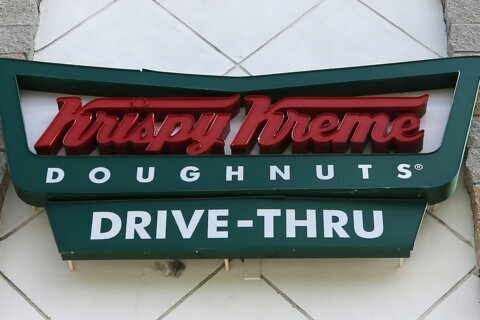For many folks, sustainability has become top of mind. The Dietary Guidelines Advisory Committee brought up the topic for the first time as a recommendation for the entire U.S. population in its report. (The final version of the 2015 Dietary Guidelines for Americans, however, left out the sustainability factor.)
Some of the foods that tend to create the larger carbon footprints include animal-based foods such as dairy, fish and beef. However, many farmers work very hard to ensure that they continue taking steps to reduce their carbon footprints and create more sustainable farms to feed those who demand their delicious products. I spoke with five types of farmers to get their takes on the sustainability issue and to learn about the steps they’re taking to make their farms more sustainable. Here’s an edited version of what they said:
Cattle
“I live in the Kansas Flint Hills, one of the last remaining natural tallgrass prairies in the world. To protect the prairie, we work hard to maintain the water and water quality in our ponds. The water comes from rainfall on the surrounding hills and is filtered through the grass as it runs into the ponds, providing access to clean, fresh water for cattle and wildlife alike. According to recent studies, up to 75 percent of wildlife in the U.S. lives on farms and ranches. We manage for the entire ecosystem and diversity is the goal — both in wildlife and grasses. That makes for a healthier grassland and healthier cattle.”
— Debbie Lyons-Blythe, Blythe Ranch, Kansas
Eggs
“Our family has been in continuous operation since 1875. One of the most exciting things has been the change in sustainability. We’re using 71 percent fewer greenhouse gases, so every day we’re trying to do a better job of taking care of the birds and the environment. In the egg business, you know you produce food for people every day, and no matter what, that is always enjoyable.”
— Bob Krouse, fifth-generation egg farmer at Midwest Poultry Services in Indiana
Salmon
“In Cermaq (an international fish farming group), preventive fish health to avoid treatments and mortality is one of the cornerstones in our farming operations. We also focus on reducing the footprint of our operations, where Aquaculture Stewardship Council certification of our sites is one of the measures. In the Global Salmon Initiative, the industry also focuses on finding novel commercial sources of marine omega-3 fatty acids, which will have a major impact on the further growth of sustainable salmon farming.”
— Jon Hindar, CEO of Cermaq
Dairy
“First and foremost, we want our family’s farm to be sustainable so it will be here, and be successful, when our children are old enough to take it over. Ideally, they’ll take what we’ve taught them about sustainability and implement it into their management style — and then pass the farm on to their children. Our oldest is only 11 years old, so it seems like a lifetime away, but being sustainable now is the way to make that happen.
“Sharing our sustainability efforts is a way to let people know how seriously we take our commitment to our land, our cows and the people who drink our milk or eat our cheese. By responsibly farming our land, taking the very best care of our cows and using our methane digester to create electricity for our farm and neighborhood, we know we are creating a beverage we can be proud of. We are committed to the quality dairy products that come from our cows, but also proud of the sustainable way we farmed to bring them to our community.”
— Cliff and Andrea Sensenig of Compass Farms in Lancaster County, Pennsylvania
Hogs
“In the last 5 to 10 years, my brother-in-law, Brett Conrady, and I have become more reliant on utilizing technology to progressively do our jobs better every day. In order to sustain our farm for the next generation, we have to be conscious of protecting our natural resources and being good stewards of the land. To many, that is essentially what sustainability means.
“In all of our pig barns, we transitioned to utilizing compact fluorescent light bulbs to help reduce our power usage while we are on the farm and the lights are on. To reduce our dependence upon oil and fuel, we have transitioned our tractors to more efficient models that have stricter emission requirements. Most notably, we transitioned our waste management system from a power take-off to a hydraulically-driven unit. This shift, coupled with a more efficient tractor, has reduced our fuel usage by 17 percent.
“We have also looked at alternative feed ingredients to help improve the efficiency of our animals. We currently utilize a feed ingredient that contains essential oils, chili powder, oregano and many all-natural, organically-derived ingredients. We’ve found it helps boost the overall well-being of the animals since their immune systems are more stimulated. There have been instances, especially in our mother pigs, where we have seen a reduction in the use of antibiotics. Further, when this ingredient is utilized in late growth stages of market pigs, their growth becomes more efficient due to the improved immune system and heightened level of overall well-being. That allows us to become less dependent upon our primary natural resources including water, land and fuel.”
— Thomas Titus, owner of Tri Pork Inc. in Elkhart, Illinois
Editor’s Note: The author is on the Beef Check Off Advisory Board and is an Ambassador for the National Dairy Council.
More from U.S. News
11 Best Fish: High in Omega-3s–and Environment-Friendly
8 Ways to Start an Urban Garden
How Farmers Are Becoming More Sustainable originally appeared on usnews.com







